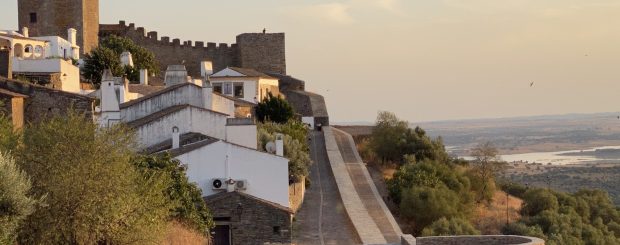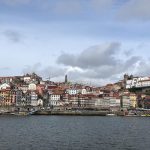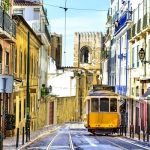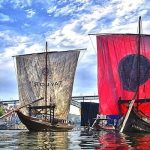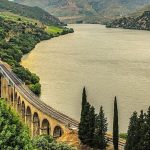Itinerary 3 days in Alentejo, the best way to visit this beautiful region, internationally known for its history, its wine or even its unique gastronomy. Starting and ending in Lisbon, a tour with so much to discover, let´s check !!!
Not included
- Meals
- Entrance Fees
Included
- Accredited and exclusive guide
- Bottled water
- Free wifi
Prices
| 2 People – 1150€ | 6 People – 1700€ |
| 3 People – 1300€ | 7 People – 1820€ |
| 4 People – 1450€ | 8 People – 2000€ |
| 5 People – 1530€ |
Itinerary 3 days in Alentejo
With a rich history, in the Portuguese period and in the aerial period of the Iberian Peninsula, ex Hispanics and different civilizations among them; the Romans, the Christian Arabs, even the Phoenicians with inheritances up to 3000 years ago.
Phoenicians, Celts, Romans, all these different civilizations, have left their legacy here since BC (before Christ), a place where culture and tradition have always been hand in hand.
The Romans here left among, writings, mosaics, important cities, monuments, however older civilizations also left here their megalithic monuments, such as Antas.
The Arabs, on the other hand, were attracted by the smell of jasmine, soon afterwards with the reconquest, “castles” and walls were born, many of them built on the old Muslim mosques.
Until today, the region has been growing, especially in agriculture, livestock, fishing, industry, with cork being the one that interrogates the most people, having had a more pronounced growth, especially in tourism products.
Itinerary 3 days in Alentejo
Nowadays Alentejo typical music ( Canto ) also deserves our attention, a choir singing with only two solo voices, that alternate with each other with a choir, their stanzas are repeated in a cycle, the number of times repeated as well as singers wish.
A repetition, with a slow tempo and several pauses that make the singing in the Alentejo have a certain monotony and sad themes, sung by groups of men or women.
Singing what goes on in the soul, the melancholy of life, the longing for the family, the love, the wills and the memories of the place where one was born, there are even more joyful, ironic or humorous songs.
Like Fado, he doesn’t know the origin of Cante well, but it is estimated that he was born between Gregorian chant or Arab chant.
Ask your questions now, contact us or enter our WhatsApp now…
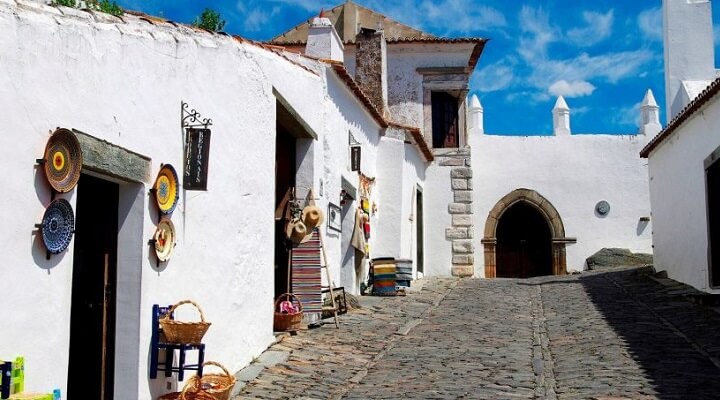
In our 3-day itinerary in Alentejo we leave Lisbon early in the morning and on arrival in Alentejo we will visit a factory traditional cork , very close to Evora.
Did you know that the bark of the Cork Oak grows every year and that every nine years it has to be removed from the tree, reaching 25 centimeters thick, the perfect material that is resistant to heat, cold and fire, after removing the cork.
The tree will regenerates again, Portugal is responsible for 55% of the world production of cork, today highly valued, whether in decorative wall and floor coverings, or even in the manufacture of sporting goods, the ideal material for baseball grains or cable. fishing rods.
However, in many countries, cork is best known for being the raw material for wine corks as it allows micro-portions of oxygen to come into contact with wine, so that wine can “age” while maintaining its quality.
Time now to enjoy Evora , explore this beautiful medieval village that betrays thousands of people every year, and the Chapel of Bones attracts more attention, this sinister chapel with walls and pillars lined with human bones and skulls is estimated to be 5,000 more monks. Do not be alarmed when reading at the entrance; “In the bones that we are here for yours, we wait” because it only takes us to reflect on life.
Another monument of great value is the Temple of Diana or Evora Temple, which lives up to the importance that the Romans gave to this beautiful city, next to Cathedral , built in the Roman period, from here we can see the magnificent“ Água da Prata ”aqueduct, outside the city walls and extending from the city periphery, some of its arches are still visible within the city, built in the 16th century to guarantee water transport.
Not just did Romans civilizations lived here, the Arabs built their streets and alleys in the 11th and 12th centuries, Evora was also the residence of some Portuguese kings, a point of convergence for renowned artists, supported by Portugal’s reigning patronage and dynasty.
This day includes a personalized visit to a winery in Alentejo, or were it not Alentejo land of good wines, our winery will be the Ervideira where in addition to the visit to the winery and personalized explanation of the reception of the grapes to the bottling line, then the tasting of white, rosé and red wines, accompanied with regional products such as; Alentejo bread, sheep’s cheese, sausages, fruit compote and toast with olive oil and oregano.
A region that produces unique wines, this in a region of hot and dry climate, being essential to use drip system in the vineyard, with soils and reliefs a very sunny area that allows a perfect ripening of the grapes.
Alentejo is a practically flat region that produces white wines that are generally soft, slightly acid and with aromas of tropical fruits, while red wines are full-bodied, rich in tannins and with aromas of wild and red fruits.
IMPORTANT: You can visit another winery and not Ervideira, in which case your reservation and payment will be your responsibility.
We will now arrive at Monsaraz , with its walls in excellent state, in a revival of medieval times, in this which is one of the best preserved historic Portuguese villages, white walls of lime and schist, with the wind whispering between its streets and sidewalks.
So many stories of daring kings, Knights Templar, and so many different civilizations who pass through here, the visit to the Castle is essential, as well as admiring the giant lake that divides Portugal and Spain.
Here we will have the opportunity to check there wonderful sunset.
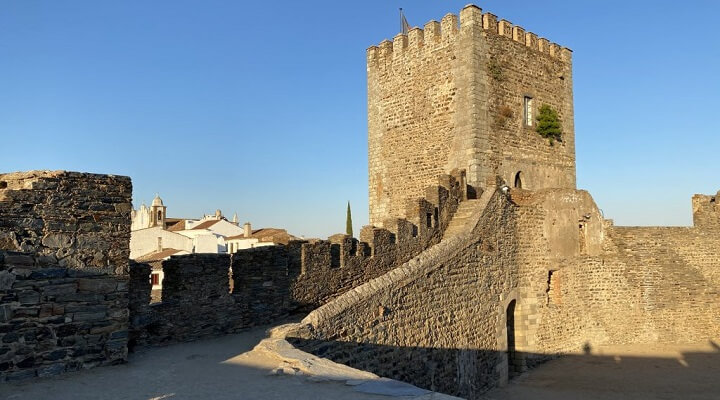
Today the day of our Itinerary 3 days in Alentejo, will be spent only in the region, an eclectic day with several types of visits and curiosities.
We start by visiting Xerez cromlech estimated to have been built between the beginning of the 4th millennium and the middle of the 3rd millennium BC, with a square shape, developing around a central menhir about 4m high, which, like the others, has several “dimples” in its verticality.
A megalithic monument consists of about 50 granite menhirs, of phallic form and a height ranging between 1.20m and 1.50m, the Xerez cromlech had to be transferred from its original location in 2004, due to the construction of the Alqueva dam.
The Alqueva dam the largest artificial lake in Europa, a reservoir created by man with about 250km2 and 1100 kilometers of margin, a reservoir that covers different counties; among them Portel, Moura, Reguengos de Monsaraz, Mourao and Alandroal, and also the Spanish municipalities of Olivença, Cheles, Alconchel and Villanueva del Fresno.
With construction beginning in 1998 and ending in 2002 with the opening of the floodgates, however, since the project that was born during the Salazar dictatorship until its construction, more than 50 years have passed, perhaps the greatest construction of the last century in Portugal.
In order to create an irrigated area in a region known for drought, where it rains little and at the same time develop hydraulic power with a capacity of 520 megawatts, sufficient to supply the entire Beja region.
If the weather conditions allow it, we will take a boat trip, about an hour and a half, to get to know the dam and its small islands, including the golden island, where we can stop and enter the water, as residents say of the region “I already ate colder soups” since the water in the summer can reach 29º centigrade.
In this region, we have lots of traditional restaurants, with an extremely cost benefit, from where you can get to know the different dishes of black pork (famous for giving rise to the Spanish ham pata negra), or different bred soupss and migas (dishes made with bread) or why not a fish or tomato soup, options for all tastes.
Let’s meet now Sao Pedro do Corval , this typical Alentejo village known as the pottery capital, here you find more than thirty potteries, one of the most famous handicraft products in Alentejo. If you wish you can try to make your own piece, if you can.
On this day (if you wish), we will be able to visit the one that is known as one of the most beautiful and important Portuguese wineries, Esporao (tickets not included).
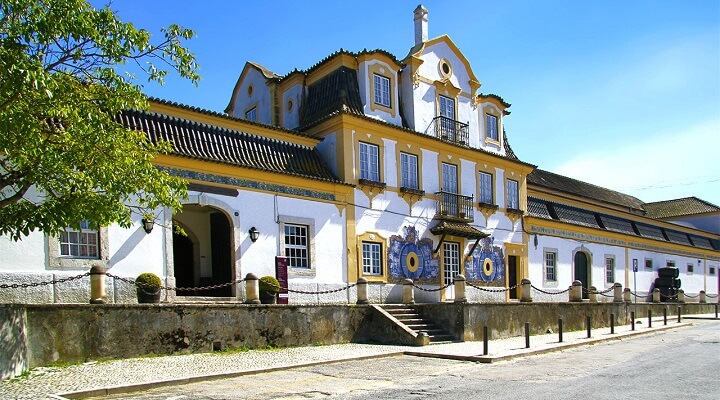
Today is the day to return to Lisbon, but not before visiting Arraiolos, a place famous for its tapestry and its Medieval castle in a unique, circular shape, built by D. Dinis (1279-1325), with the village evolving outwards the walls.
Lunch may take place in Setúbal, a city where fish and barges have been the most important economic factor for centuries, fishing and canning, was one of the main export products, greatly driven by the port of Setubal .
In the city center we will find shops for all tastes and ages, from global brands to more local ones, with rarities and less conventional products, culture lurks around every corner, where buildings are living testimonies of a city that has grown and modernized without forgetting its roots, the sea.
Our tour
Reviews Tripadvisor
 Solicitei somente um tour pelo centro de Sintra, que foi muito agradável , do jeitinho que queria, graças à atuação do guia Carlos Rodrigues, que sabe receber bem o... read more turista.
Solicitei somente um tour pelo centro de Sintra, que foi muito agradável , do jeitinho que queria, graças à atuação do guia Carlos Rodrigues, que sabe receber bem o... read more turista.
A seguir fui realizar um antigo sonho meu: conhecer Azenhas do Mar, com sua piscina vulcânica. O local não é oferecido pelas agências de turismo, mas a Walkborder conseguiu incluir o local no roteiro . Valeu a pena e recomendo muito.
O percurso até Cascais é muito lindo , com praias deslumbrantes, ao contrário das que ficam na cidade, que são pequenas e cheias de pedras.
Sinceramente não gostei de Cascais.
Estoril estava com o jardim principal, em frente ao Cassino, ocupado por um campeonato de tênis, o que desfigurou todo o glamour que ele costuma ter.
A volta à Lisboa foi pela orla marítima , que também é espetacular.

17 de September, 2022
 EXPERIÊNCIA SENSACIONAL EM PORTUGAL COM A WALKBORDER!!!
EXPERIÊNCIA SENSACIONAL EM PORTUGAL COM A WALKBORDER!!!
Eu e minha esposa tivemos o grande privilégio de fazermos OITO passeios maravilhosos com a equipe da WALKBORDER!
O Hugo, diretor... read more da WALKBORDER, nos foi indicado por um grande amigo, que nos disse que se gostaríamos de conhecer as “entre linhas” de Portugal, deveríamos contratar sua empresa! Assim foi feito, e foi realmente maravilhoso!!!
Fizemos dois passeios no Porto, dois em Lisboa, fomos à Coimbra, Nazaré, Óbidos, Sintra, Cascais, Estoril, Évora e Setúbal. Sem contar dois serviços de traslados que tivemos!
Qual o melhor? Injusto serei se fizer essa escolha. Cada lugar com sua paisagem, pessoas, comida, e até mesmo clima diferentes! Surpreendentemente como Portugal tem tanta diversidade com um território pequeno, se comparado ao Brasil.
Fomos atendidos por cinco diferentes profissionais da empresa, todos são brilhantes!
Nossos especiais agradecimentos aos guias Valter Madureira e Carlos Sousa que são excelentes profissionais, e ao Hugo que está sempre pronto para responder qualquer solicitação.
Certamente retornaremos com nossos filhos!

10 de January, 2022
Social Share
Best Sellers
2 Days Tour in Porto
2 Days Tour in Lisbon
Oporto Tour
Douro Valley Tour
Sobre
A Walkborder é uma agencia de viagens de Turismo Receptivo em Portugal , efetuamos topo o tipo de Transfers , Passeios Privados e Roteiros Privados.
Telefone: (+351) 963 666 009
Email: geral@tours.com.pt





